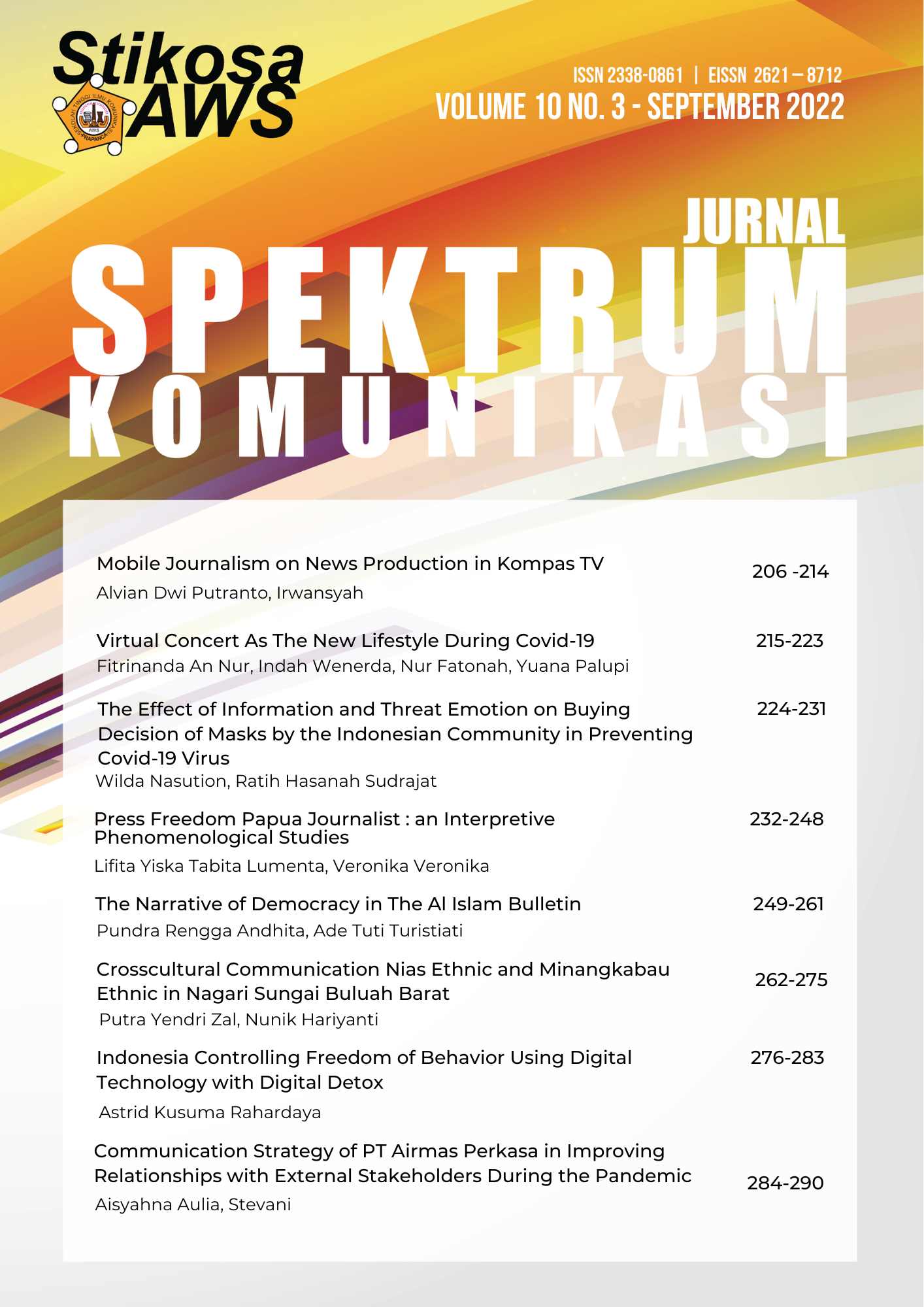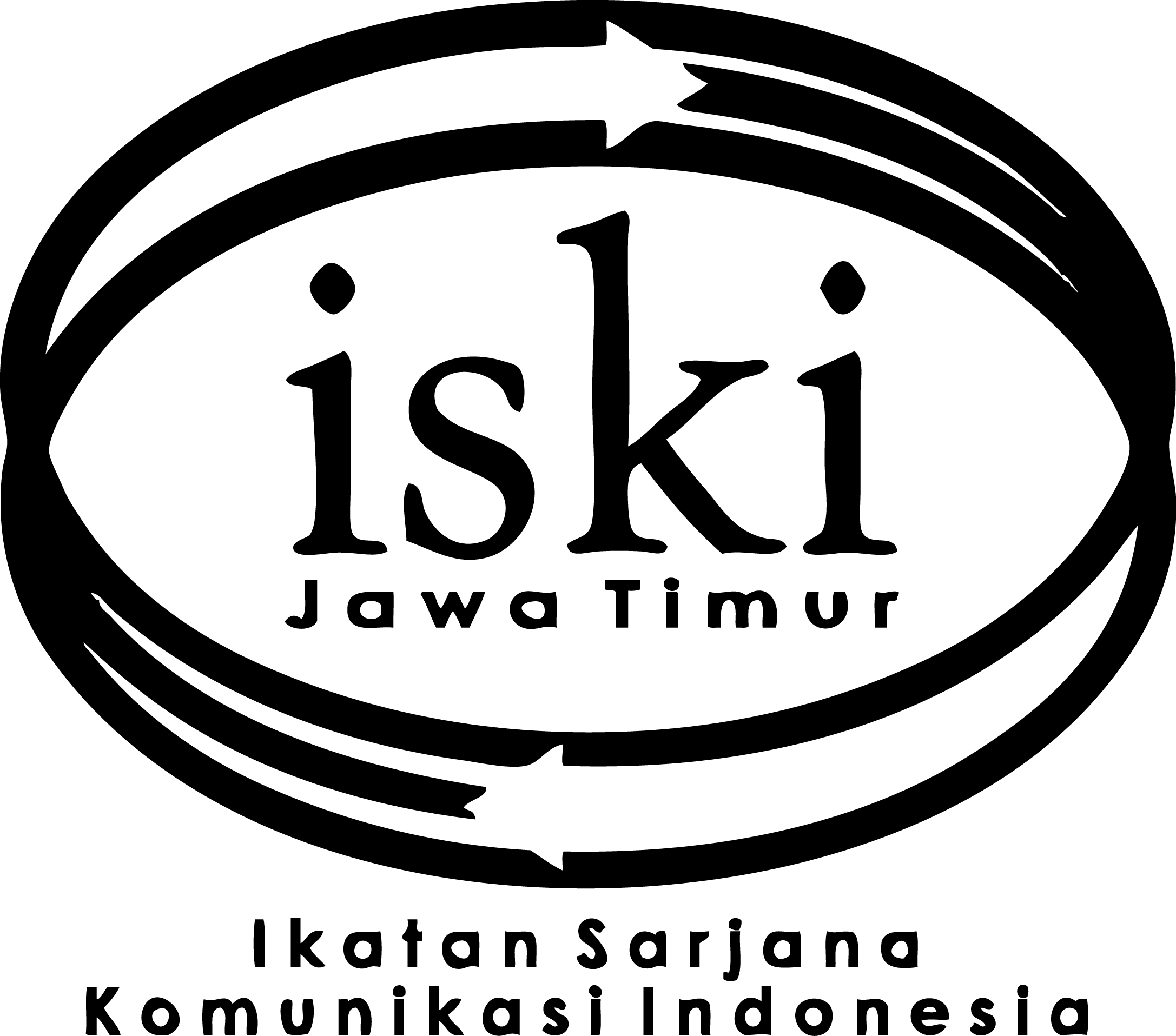Crosscultural Communication Nias Ethnic and Minangkabau Ethnic in Nagari Sungai Buluah Barat
DOI:
https://doi.org/10.37826/spektrum.v10i3.242Kata Kunci:
Crosscultural Communications, Nagari Sungai Buluah, Nias, Minangkabau, West SumateraAbstrak
Cross-cultural communication occurs between individuals and groups who have different cultural backgrounds. One case of communication in the perspective of cross-cultural communication is between the Nias community and the Minangkabau community in Nagari Sungai Buluah Barat, Padang Pariaman, West Sumatra. This study aims to describe how cross-cultural communication occurs in the Nias and Minangkabau tribal communities in Nagari Sungai Buluah Barat using the six cultural dimensions proposed by Hofstede. The method used in this research is descriptive qualitative. The number of resource persons in this study amounted to six people. The data collection techniques used in this study were observation, interviews, documentation, and the Face Negotiation Theory to analyze the research results. This study indicates that the Nias and Minangkabau tribes in Nagari Sungai Buluah Barat have reached a form of compromise and mutually accept all conditions of differences and then maintain boundaries in acting to create harmony. They have the awareness that they are only the next generation who continue the concept of life passed down by their ancestors long ago. A Malakok tradition is a form of assimilation of Minangkabau culture to Nias because Nias is an immigrants to Minangkabau land.
Referensi
Amalia, L. D., Montessori, M., & Indrawadi, J. (2019). KERJASAMA ANTARA ETNIS MINANGKABAU DAN ETNIS NIAS DALAM KONTEKS SOSIAL BUDAYA DI NAGARI SUNGAI BULUH BARAT KECAMATAN BATANG ANAI. Journal of Civic Education, 2(1), 46–55. https://doi.org/10.24036/jce.v2i1.107
Ardila, Y. (2019). MEMAHAMI KOMUNIKASI ANTAR BUDAYA DALAM LAYANAN KONSELING KELOMPOK. Jurnal Bimbingan Dan Konseling Borneo, 1(2), 1–7.
Busthomi, I. (2021). Strategi Interkultural dan Kebutuhan Pelatihan Kompetensi Komunikasi Antar Budaya Bagi Ekspatriat Untuk Pengembangan Sumber Daya Manusia. Jejaring Administrasi Publik, 13(2), 121. https://doi.org/10.20473/jap.v13i2.31831
Indrayuda. (2008). Tari Balanse Madam Pada Masyarakat Nias Padang: Sebuah Perspektif Etnologi. UNP Press.
Ishak, M. I. (2020). Symbolic Meaning Behind Traditional House Of Waibalun Community Larantuka Sub District, East Flores Regency. Jurnal Spektrum Komunikasi, 8(1), 1-10. https://doi.org/10.37826/spektrum.v8i1.58
Kurnia Syah, D. (2016). Komunikasi Lintas Budaya. Simbiosa Rekatama Media.
Liliweri, A. (2005). Prasangka dan Konflik: Komunikasi Lintas Budaya Masyarakat Multikultur. LKiS Yogyakarta.
Mulyana, D., & Jalaludin, R. (2006). Komunikasi Antarbudaya: Panduan Berkomunikasi Dengan Orang-Orang Berbeda Budaya. PT Remaja Rosdakarya.
Paramita, S., & Wulan, P. (2016). Komunikasi Lintas Budaya Dalam Menjaga Kerukunan Antara Umat Beragama di Kampung Jaton Minahasa. Jurnal Pekommas, 1(2).
Septiani, R. (2017). PENYELESAIAN SENGKETA TANAH ULAYAT DI KERAPATAN ADAT NAGARI (KAN) SUNGAI BULUH KECAMATAN BATANG ANAI KABUPATEN PADANG PARIAMAN. Abstract of Undergraduate Research, 8(1).
Sovia Firdaus, D. R., P.Lubis, D., Susanto, D., & Soetarto, E. (2018). Portrait of The Minangkabau Culture According to Hofstede’s Six Cultural Dimensions. Sodality: Jurnal Sosiologi Pedesaan, 6(2). https://doi.org/10.22500/sodality.v6i2.23229
Sugiyono. (2015). Metode Penelitian Pendidikan Pendekatan Kuantitatif, Kualitatif, dan R&D. Alfabeta.
Tamburian, D. H. H. (2018). Komunikasi Lintas Budaya Masyarakat Dayak Dalam Menjaga Kerukunan Hidup Umat Beragama. Jurnal Komunikasi, 10(8).
























